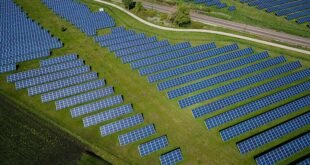Growth in Nigeria’s Oil Production: A Strategic Shift
Nigeria has made significant strides in enhancing its hydrocarbon production through substantial investments in drilling infrastructure. Over the past three years, from 2022 to 2025, crude oil producers operating in the country have allocated a total of $8 billion to develop rig infrastructure. This investment has led to a marked increase in drilling activity and production capacity, with the number of wellbores drilled to total depth reaching 236 since 2022.
The Nigerian Upstream Petroleum Regulatory Commission (NUPRC) reported that the nation’s rig count has reached a new high of 46 as of July 2025. This represents a dramatic rise from just eight rigs in 2021, marking a 475% increase over four years and a 48% growth within the first seven months of 2025 alone. The rise in rig counts reflects the industry’s growing confidence and activity levels, which are critical indicators of the health and vibrancy of the oil and gas sector.
Understanding Rig Counts and Their Significance
In the oil and gas industry, a rig is the equipment used to drill wells into the earth’s subsurface to extract crude oil or natural gas. The rig count serves as an essential metric for assessing the industry’s activity level. A high rig count indicates increased exploration and drilling, while a low count suggests reduced activity or investment. According to Gbenga Komolafe, the Chief Executive of NUPRC, the surge in rig counts signifies progress in harnessing Nigeria’s hydrocarbon resources.
This development aligns with the commission’s efforts to boost oil production and achieve its goal of increasing Nigeria’s crude oil output by one million barrels per day from October 2024 to October 2026. Komolafe attributed the growth in rig counts to the enactment of the Petroleum Industry Act (PIA) in 2021 and the commission’s commitment to increasing oil production.
The Impact of Policy and Investment
President Bola Tinubu mandated the commission to drive growth in the upstream petroleum sector in 2023. In 2024, he signed important Presidential Executive Orders to further open the oil industry, declaring, “Nigeria is open for business.” These measures have contributed to the positive momentum in the sector.
Komolafe highlighted that the commission began operations nearly four years ago, during a period when production had declined to about one million barrels per day. Today, production is oscillating around 1.7 million barrels per day. He emphasized that the rig count is a key metric for measuring the industry’s performance, as it reflects the level of activity and confidence among investors.
Economic and Operational Implications
The increase in rig availability has also opened up employment opportunities, boosting economic activities across the country. According to Sunday Ala, the Senior Manager of Wells & Drilling Service at NUPRC, the multiplicity of rigs has created more job opportunities, contributing to broader economic growth.
Historically, the rig count slumped to as low as six in May 2020 during the COVID-19 pandemic. However, following the passage of the PIA, the figures steadily climbed, reaching 24 by January 2023. Despite a brief dip in March 2023 to 20 rigs, the average rig count surged to 31 by September 2023. This growth trend continued into 2024 and early 2025, with a sharp rise observed between June and August 2024, increasing from 29 to 38 rigs.
By January 2025, the industry recorded an average of 39 rigs, representing a 145% increase from January 2020. This resurgence in exploration and drilling activities underscores the positive impact of regulatory reforms and investor confidence.
Strategic Development and Future Goals
The presentation highlighted that rig activity has grown steadily post-PIA, driven by investor confidence and tighter regulatory oversight. Key inflection points were marked in 2023 and 2025, likely tied to the ramp-up of Petroleum Prospecting License awardees with licenses expiring in June 2025. Over $8 billion has been spent on drilling and completing approximately 236 wellbores to total depth since 2022.
Rig activity has risen by 28% by the half-year of 2025, reflecting strong regulatory support and increased operator confidence. The steady month-on-month rise signals intensified upstream activity across various terrains. This growth trajectory highlights the commission’s strategic role in aligning operations with the Project 1MMBPD Incremental initiative.
Enhancing Production and Reducing Costs
Nigeria’s rig count has played a critical role in ramping up production, with daily volumes exceeding 1.7 million barrels per day as of recent reports. While not all drilling results in immediate output, development drilling—following exploration and appraisal stages—is the primary contributor to national crude output.
Komolafe emphasized the importance of driving down the unit cost of crude oil production in line with the country’s aspirations. Through the Project One Million Barrels initiative launched in October 2024, Nigeria has scaled up its oil production from one million barrels per day to around 1.7 million barrels.
Since the launch of the program, an additional 300,000 barrels of oil per day have been achieved. This progress marks a significant step toward achieving the country’s ambitious production goals.
 Info Malang Raya Its All About World News
Info Malang Raya Its All About World News




